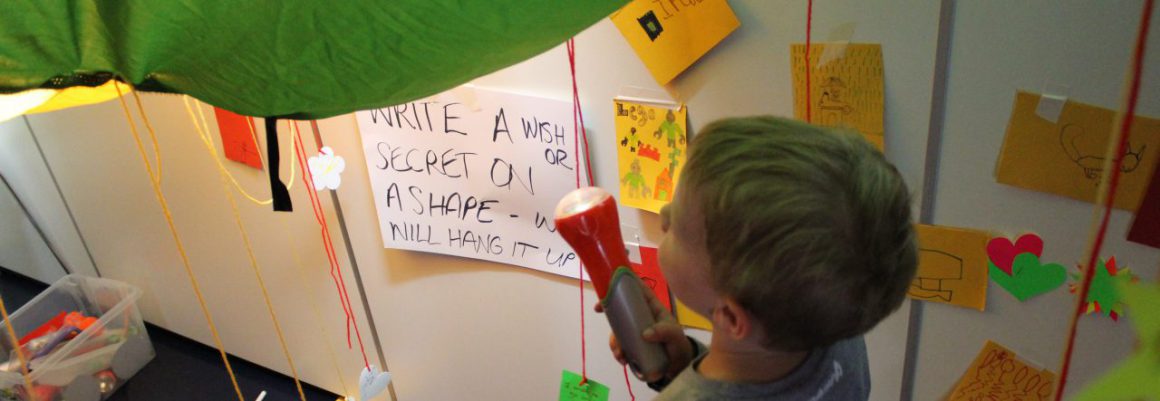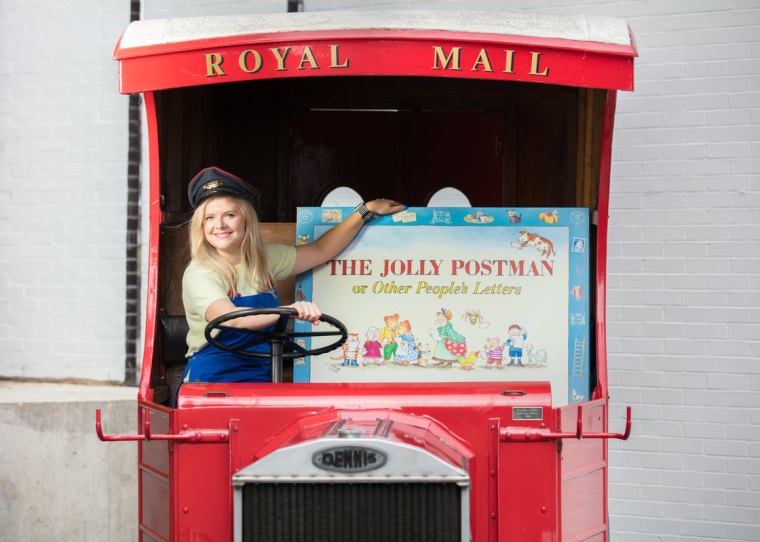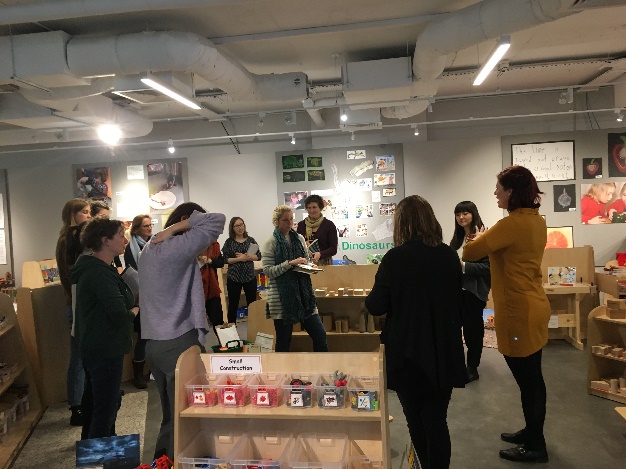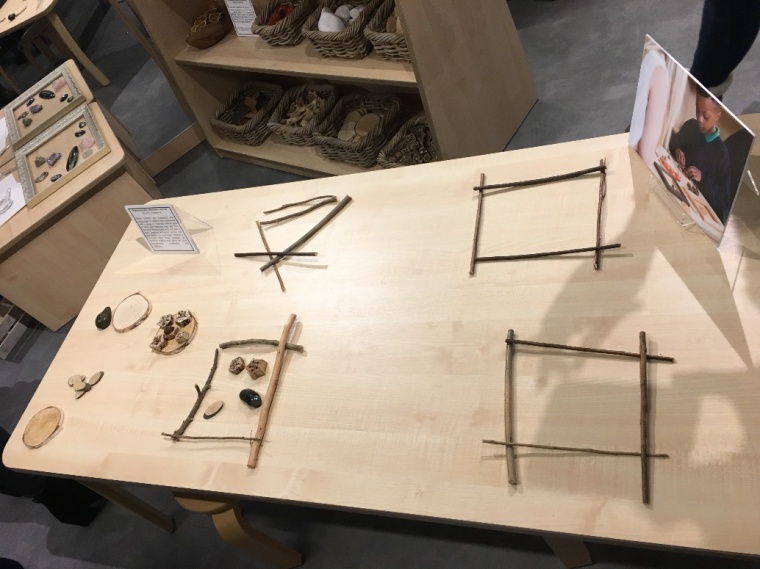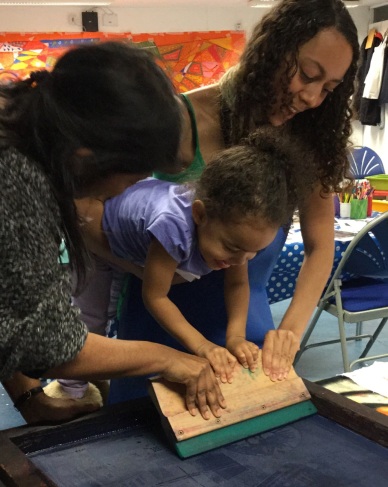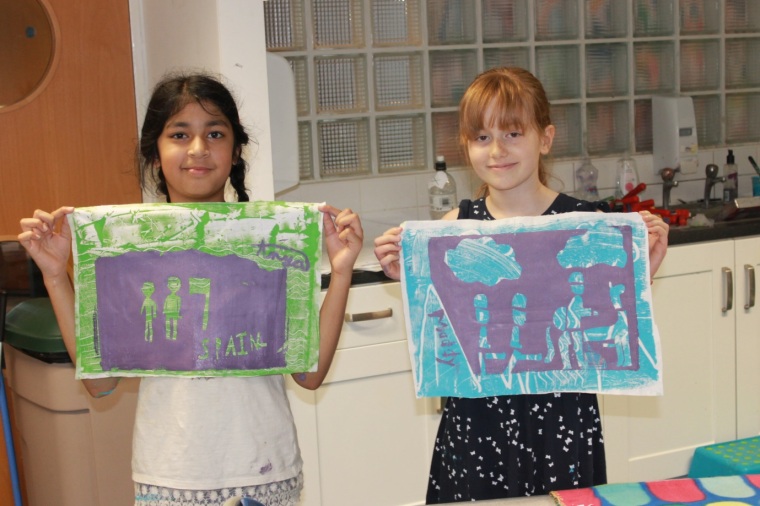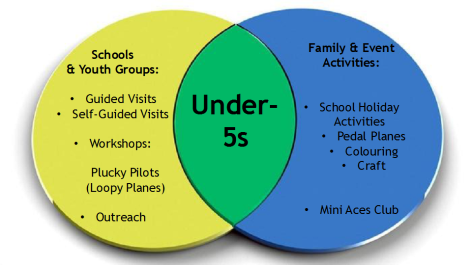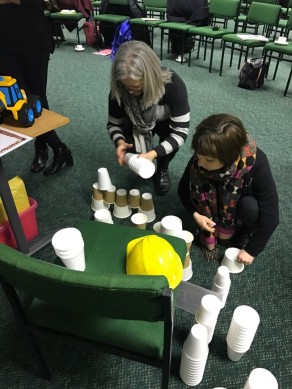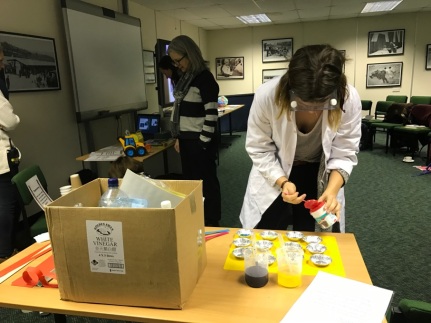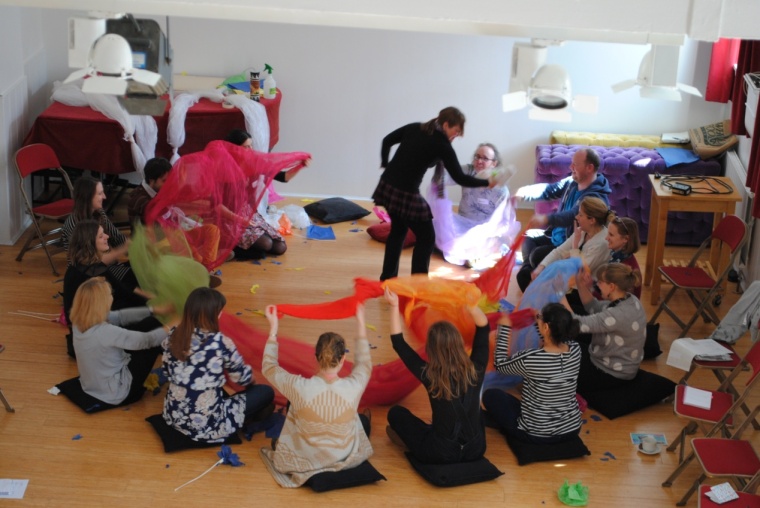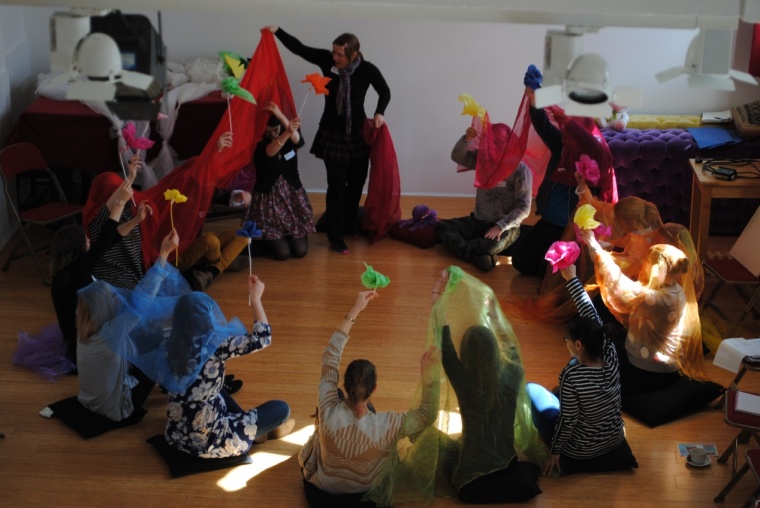What connects a giant picture book, envelope bunting and an umbrella full of leaves?
On World Book Day, Sally Sculthorpe, Schools Learning Manager at The Postal Museum shares their approach to delivering a book-based Early Years programme full of magic, mischief and occasionally mayhem.
The beginning…
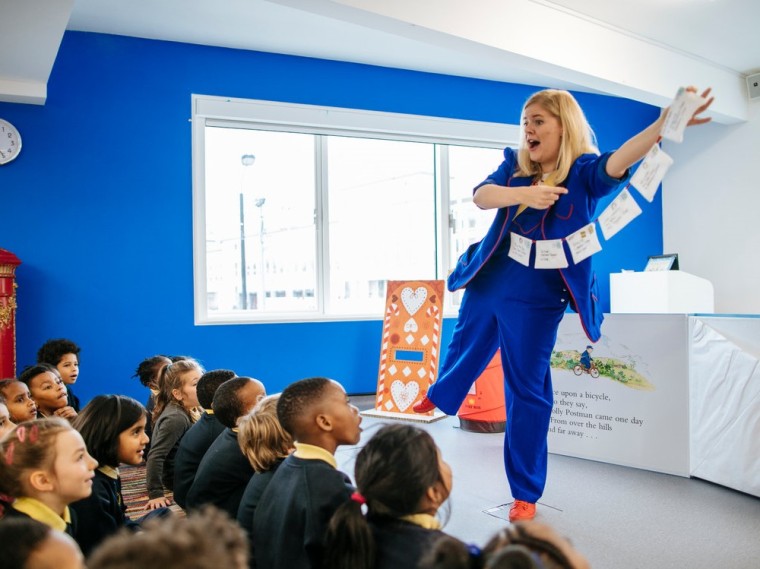
The Jolly Postman programme is a literacy learning experience for early years children inspired by the much-loved book by Allan Ahlberg. In 2016, The Postal Museum secured a five-year license agreement with Penguin Random House and three-year funding from John Lyon’s Charity to develop the programme, including salary costs for a Project Officer.
The two-part programme delivers an outreach workshop in school, followed by a workshop in The Postal Museum. The programme aims to inspire a love of reading by bringing the book to life and uniquely linking the fictional story to the real history of the post. The fairy tale magic is put in a real-life context, to help children understand the importance of post in the past and identify its relevance to their own lives.
Children take on the role of Jolly Posties to help the facilitator, ‘Rosie Postie’, complete two postal missions. In the school outreach workshop, children deliver the post for fairy tale characters. In the museum mission children uncover curious post from long ago in The Postal Museum collection. The school workshop creates anticipation for the museum visit. In between (about two weeks) teachers extend the learning in their classroom teaching.
The middle…

The Jolly Postman inspires enjoyment of reading through active participation and encourages children to build their own story. Workshops use simple hand actions, like ‘time for tea’ and recurring motifs and rhymes, including a special delivery song to build confidence.
From the initial opening of the giant book, children are immersed in a sensory learning experience. As Jolly Posties, they cycle far away and back in time on imaginary bicycles to collect, sort and deliver the post. Each new delivery introduces a different type of post (eg postcards, letters, parcels). Children apply their knowledge of traditional tales and use literacy and numeracy skills to solve clues, even conjuring a spelling spell from a parcel of magic spoons.

Since September 2017, 2,785 children (aged 4 – 7) have taken part. A high number of schools rebooked for a second academic year and demand continues to grow.
Teacher feedback is used to review the programme and is essential to its success. 100% of teachers rate the programme as ‘Excellent’. Qualitative questions ask how workshops support the literacy curriculum and learning needs. Teachers highlight its inclusivity and that participation builds the confidence of even the most reluctant readers.
“Perfect balance of presentation and participation. There wasn’t one part the children didn’t enjoy! When the umbrella popped open and the leaves fell out, all the children gasped and were excited for what was going to happen next.” Altmore Infant School
“The children were so engaged throughout. A super interactive experience. They loved it! So visual. Fantastic for ALL learners – even SEN.” St Bernadette’s Primary School
The Postal Museum regularly receives letters, postcards and pictures from Jolly Posties as further evidence of the lasting impact the programme has on the children.
The end…

The Jolly Postman programme is funded by John Lyon’s Charity until June 2019. Penguin’s support will continue with a five-year royalty free licence, free books and schools marketing.
From September 2019, the programme costs will be paid by The Postal Museum. The success means the museum does not have to increase the cost to schools.
The Jolly Christmas Postman is also available in November and December. This seasonal workshop links to key curriculum topics including the weather and festivals and is exceptionally popular with schools.
The last word…
Simple is best! Believe in the power of the story and this will create magic learning moments.
Find out more: postalmuseum.org/for-schools
